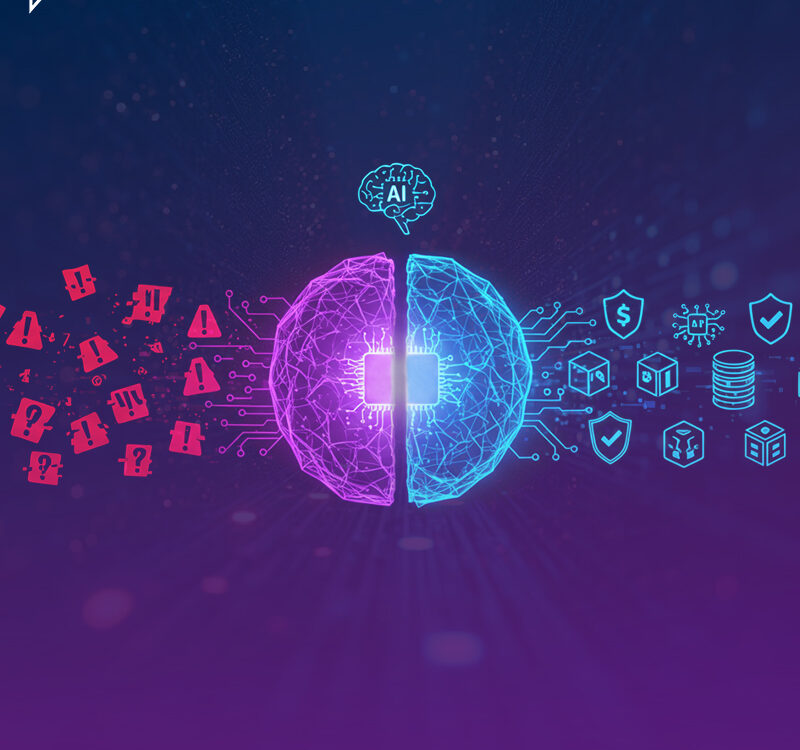
How AI and Machine Learning Are Shaping the Next Generation of Scoring Systems
January 28, 2025
Skyrocket Your MSSP Business in 2025: Partner with SIRP for Unstoppable Cybersecurity
January 31, 2025
How AI and Machine Learning Are Shaping the Next Generation of Scoring Systems
January 28, 2025
Skyrocket Your MSSP Business in 2025: Partner with SIRP for Unstoppable Cybersecurity
January 31, 2025Table of contents
- 1. Multi-Tenant Overload: When One Breach Threatens Them All
- 2. Burnout in the SOC: The Talent Tidal Wave
- 3. Stale Threat Intelligence: When a Single Source Falls Short
- 4. SLA Minefield: The Race Against the Clock
- 5. Compliance Chaos: Navigating a Patchwork of Regulations
- Closing Thoughts: How to Make 2025 Your Year
“We used to worry about viruses and phishing attacks. Now, we’re up against a global underground of cybercriminals who roll out custom malware like clockwork,” says David Marsh, CISO of a well renowned MSSP. “And we’re not just protecting banks or hospitals anymore—we’re covering everything from boutique e-commerce shops to Fortune 500 manufacturers. The complexity is off the charts.”
Welcome to 2025, where the MSSP (Managed Security Service Provider) role is more critical—and more fraught—than ever. As threat actors grow bolder and regulations evolve at breakneck speed, keeping clients secure across diverse industries can feel like a perpetual high-wire act. Whether it’s orchestrating multi-tenant security, retaining in-demand talent, or juggling intense SLA requirements, the road ahead is packed with pitfalls that could topple even the most prepared MSSPs.
But there’s hope. In this post, we’ll delve into the 5 Deadly Pitfalls threatening MSSP SecOps and explore how SIRP offers a streamlined, future-proof antidote to each. Prepare to discover how to unify workflows, reduce analyst burnout, and maintain top-notch compliance—no matter how treacherous the cyber landscape gets. Let’s dive in.
1. Multi-Tenant Overload: When One Breach Threatens Them All
The Reality for MSSPs
By 2025, MSSPs are managing 10x more endpoints and customers than they did five years ago, according to a recent Gartner forecast. Maintaining dedicated security environments for each client can turn into a logistical quagmire. One misconfiguration in a single tenant can ripple across others, jeopardizing your entire client base.
Key Consequences
- Cross-Contamination Risks: A single compromised system can become a threat pivot to other customers—potentially tarnishing your reputation.
- Escalating Costs: Constantly adding point solutions to meet each client’s security demands quickly becomes unsustainable.
How SIRP Helps
- Centralized Visibility: SIRP’s multi-tenant architecture offers a single source of truth while maintaining strict data boundaries, so every analyst knows exactly where threats stand in real time.
- Granular Role-Based Access: Prevent “neighbor breaches” by enforcing tight, clear-cut boundaries that keep client environments partitioned and secure.
Actionable Tip: Review your multi-tenant security policies quarterly. An IDC study indicates that MSSPs without routine policy refreshes see a 35% higher cross-tenant incident rate by 2026.
2. Burnout in the SOC: The Talent Tidal Wave
The Reality for MSSPs
The cybersecurity talent shortage is a well-known problem, but MSSPs feel it twice as hard, says (ISC)². You’re battling not just enterprises but also Big Tech and government agencies for scarce talent. Meanwhile, your existing analysts grapple with never-ending alerts, stretching themselves thin—and inevitably, something’s gotta give.
Key Consequences
- Customer Churn: Overworked teams can miss critical alerts or respond too slowly, prompting clients to switch providers.
- Profit Erosion: Rehiring and retraining eats into your bottom line and disrupts service quality.
How SIRP Helps
- Automation Playbooks: Offload repetitive, low-level tasks to SIRP’s automated workflows, freeing analysts to focus on higher-level threat hunting.
- Gamified Skill Development: SIRP integrates with learning modules to keep your team on top of emerging threats—fostering job satisfaction and retention.
Actionable Tip: Assign an “Automation Champion” to identify and automate one manual process a month—like phishing analysis or basic endpoint triage. Small steps can yield giant leaps in analyst morale.
3. Stale Threat Intelligence: When a Single Source Falls Short
The Reality for MSSPs
Threat actors are innovating so quickly that a single intel feed from a legacy platform no longer suffices. A Ponemon Institute survey found that 65% of MSSPs struggle to contextualize raw threat data by vertical—leading to slower detection and more noise.
Key Consequences
- Delayed Detection: Overwhelming false positives and missing key indicators are a deadly combo.
- Inaccurate Priority: Without tailored intel, you might undervalue a high-risk alert that’s critical for a specific vertical like healthcare or finance.
How SIRP Helps
- Real-Time Correlation: SIRP ingests data from multiple threat feeds, cross-checking and prioritizing them based on each client’s industry and risk posture.
- Adaptive Scoring: SIRP continuously recalculates risk as new intel arrives—so your team is never stuck responding with outdated information.
Actionable Tip: Integrate two or three reputable intel feeds—like VirusTotal, AbuseIPDB, or an industry-specific provider—to cross-validate crucial alerts. This approach cuts false positives by up to 40%, according to MSSP best practices.
4. SLA Minefield: The Race Against the Clock
The Reality for MSSPs
Clients want near-instant detection and response—some even demand Mean Time to Respond (MTTR) under 15 minutes. According to CyberEdge, 75% of MSSPs face regular SLA breaches because their workflows are too manual or siloed.
Key Consequences
- Financial Penalties: Breached SLAs can lead to harsh contract fines or, worse, contract termination.
- Reputation Damage: Word spreads when you can’t meet your own promises—harming your brand equity and future sales.
How SIRP Helps
- Built-In SLA Monitoring: Automated timers warn your team when an incident approaches critical thresholds.
- Lightning-Fast Orchestration: SIRP’s workflows can isolate infected endpoints, block malicious IPs, or trigger additional investigations at machine speed.
Actionable Tip: Configure SLA-specific playbooks in SIRP that automatically escalate tickets if no action is taken within a set time (e.g., five minutes). This can slash your SLA breach rate by nearly 40%.
5. Compliance Chaos: Navigating a Patchwork of Regulations
The Reality for MSSPs
From evolving data privacy rules in Europe to newly minted cybersecurity frameworks in APAC, compliance demands are all over the map - and it’s only going to intensify by 2025. Forrester forecasts a 30-40% spike in the time MSSPs spend preparing for regional audits compared to five years ago.
Key Consequences
- Massive Fines: Missing mandatory notifications or mismanaging data can run up multi-million-dollar penalties.
- Operational Drag: Constantly switching between frameworks leaves less time for threat hunting and strategic improvements.
How SIRP Helps
- All-in-One Compliance Management: SIRP consolidates incident evidence, timelines, and actions so you can produce an audit-ready trail at the click of a button.
- Dynamic Reporting: Instantly generate GDPR, PCI DSS, HIPAA (or any other regulation) compliance reports without rummaging through multiple tools.
Actionable Tip: Create compliance-specific incident tags in SIRP—like “HIPAA,” “GDPR,” “PCI”—so each incident is automatically associated with the relevant reporting requirements. This small tweak will drastically reduce manual overhead.
Closing Thoughts: How to Make 2025 Your Year
2025 may look daunting, but it’s also a year of massive opportunity for MSSPs who know how to adapt. If you can master multi-tenant security, tame SOC burnout, harness relevant threat intel, dodge SLA bullets, and stay on top of compliance, you’ll stand out in a crowded marketplace.
SIRP is the solution that unifies your technology, automates your workflows, and provides laser-focused visibility across every tenant and regulation. In a future where threat actors never sleep and clients demand perfection, SIRP puts you in the driver’s seat.
Next Steps
- Book a Personalized SIRP Demo: See exactly how it tackles your biggest challenges.
- Identify your quick-win automations—phishing triage, endpoint isolation, compliance tagging.
- Scale up your success: With SIRP, you’ll go from plugging holes to transforming your entire MSSP practice.
Don’t just survive 2025—dominate it. Your clients (and your competition) will take notice.




